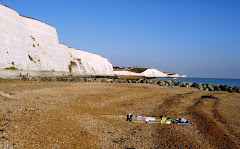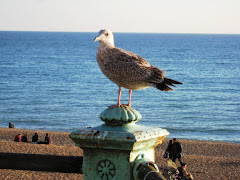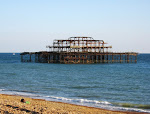
It’s fascinating spending Christmas abroad. All the assumptions about what the festive season is all about are gently challenged, as you see how others go about enjoying the great bean-feast (or religious celebration – up to you) in the middle of winter.
By ‘abroad’, I don’t mean some hermetically-sealed hotel or resort catering exclusively for Brits abroad, with turkey, Christmas Crackers and Christmas Pud, and Sky TV to watch the Queen on Christmas Day. I mean letting go and experiencing a full foreign Monty.
So here I am, in Catalonia, eating a Christmas chocolate log rather than a Christmas Cake. The log – a fantastic creation in, well, chocolate – is actually a long-standing Catalan tradition, although with its holly, Christmas Tree, and Santa Claus, this one looks pretty much like any other Christmas confection. Only the little red and white sugar mushroom (an Amanita muscaria, I think) gives it away as something different: the Catalans are big on mushrooms – where else would sell calendars entitled “Bolets de Catalunya” with a photograph of a different mushroom every month?
But back to the log. It seems that every other shop window has a log in it, with a face on one end – think a woody version of Thomas the Tank engine – wearing a red and white cap. In streets and squares, larger versions are set up for children to beat with sticks. As they beat it (usually to music), small presents appear from the other end. The log literally poos gifts. And then you go home and eat the chocolate version. That beats visiting Santa in a tinsel grotto any day, in my book.
The other big difference is how the Spanish manage to spin the whole thing out. First, there are the holidays for Christmas itself, and a week later the New Year. So far, so much like anywhere else. But one week on follows Epiphany, known here at the celebration of Three Kings, or just ‘Kings’. This is when the Spanish traditionally give their presents, and is another excuse for celebration and partying.
Most towns have parades on the Saturday evening, headed by the Three Kings themselves, all splendidly gaudily dressed, followed by trucks carrying the ‘presents’, while attendants throw armfuls of sweets to the assembled crowds. This is followed by dancing and fireworks and another late night of drinking (well, for the adults at least). The following Sunday all is deathly quiet, as everyone is ensconced at home to recover from the three weeks of excess and prepare for the year of work ahead...
By ‘abroad’, I don’t mean some hermetically-sealed hotel or resort catering exclusively for Brits abroad, with turkey, Christmas Crackers and Christmas Pud, and Sky TV to watch the Queen on Christmas Day. I mean letting go and experiencing a full foreign Monty.
So here I am, in Catalonia, eating a Christmas chocolate log rather than a Christmas Cake. The log – a fantastic creation in, well, chocolate – is actually a long-standing Catalan tradition, although with its holly, Christmas Tree, and Santa Claus, this one looks pretty much like any other Christmas confection. Only the little red and white sugar mushroom (an Amanita muscaria, I think) gives it away as something different: the Catalans are big on mushrooms – where else would sell calendars entitled “Bolets de Catalunya” with a photograph of a different mushroom every month?
But back to the log. It seems that every other shop window has a log in it, with a face on one end – think a woody version of Thomas the Tank engine – wearing a red and white cap. In streets and squares, larger versions are set up for children to beat with sticks. As they beat it (usually to music), small presents appear from the other end. The log literally poos gifts. And then you go home and eat the chocolate version. That beats visiting Santa in a tinsel grotto any day, in my book.
The other big difference is how the Spanish manage to spin the whole thing out. First, there are the holidays for Christmas itself, and a week later the New Year. So far, so much like anywhere else. But one week on follows Epiphany, known here at the celebration of Three Kings, or just ‘Kings’. This is when the Spanish traditionally give their presents, and is another excuse for celebration and partying.
Most towns have parades on the Saturday evening, headed by the Three Kings themselves, all splendidly gaudily dressed, followed by trucks carrying the ‘presents’, while attendants throw armfuls of sweets to the assembled crowds. This is followed by dancing and fireworks and another late night of drinking (well, for the adults at least). The following Sunday all is deathly quiet, as everyone is ensconced at home to recover from the three weeks of excess and prepare for the year of work ahead...



No comments:
Post a Comment